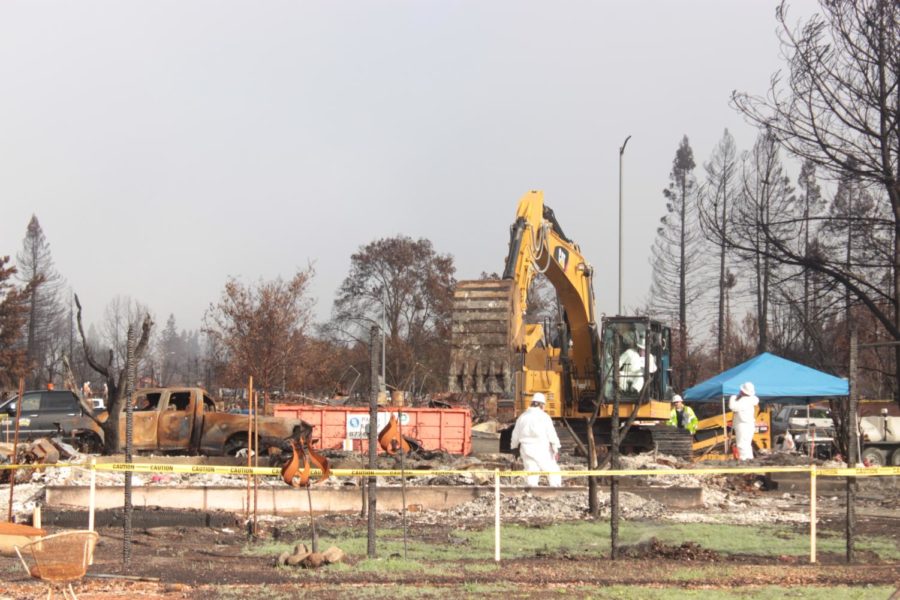The United States Environmental Protection Agency (EPA) has removed hazardous household waste (HHW) from 83 percent of the fire-destroyed properties in Sonoma County as of Nov. 11; however, toxic ash and erosion threaten to pollute the watershed.
“In the areas where you have wildland fires, the mudslides and debris flows are going to be a big environmental issue that will contaminate our water with sediment,” said Katie Gerber, a Santa Rosa Junior College environmental science and geography instructor.
“While the percentages are high and moving up there’s a lot of work to be done,” said Michael Hornick, media contact for the Federal Emergency Management Agency (FEMA).
FEMA leads a coalition of state and federal organizations to clean up Sonoma County that include the EPA, California Environmental Protection Agency (CalEPA), the Governor’s Office of Emergency Services (COES) and the Army Corps of Engineers.
“The consolidated effort is designed to ensure that people remain safe, that the environment is safe and by doing this in a consolidated way, it can actually be done more efficiently,” Hornick said.
Phase one of the Consolidated Debris Removal Program is almost completed and contracted clean-up crews working with the Army Corps of Engineers will transition from removing hazardous household waste to phase two, fire debris removal.
The first part of the clean-up started Oct. 27. The EPA has since surveyed, collected and disposed the hazardous household waste of 7,000 residential and commercial properties.
Hazardous substances are ignitable, toxic, corrosive and reactive. Examples include fertilizers, batteries, antifreeze and propane tanks.
The EPA declared phase one was completed Saturday in Coffey Park.
FEMA is now urging homeowners of fire-destroyed properties to sign up for debris removal by the Nov. 13 deadline. Signing up will give permission to the coalition of agencies to access private properties and remove waste.
Since winter and rainy season are near, FEMA expressed an interest in completing the cleanup before more rains hit and the potential for sediment pollution increases.
To combat sediment water pollution, cleanup agencies are using a multitude of techniques to protect the 617 threatened waterways in Sonoma County. Hydroseeding is one common procedure to stabilize slopes from erosion. Gerber says hydroseeding uses a combination of water and some sort of pulp or carbon matter to the help seeds grow and keep soil in place.
To protect waterways from toxic ash runoff and sediment, wattles and other hay bale type filters are being placed near storm drains to reduce pollution.
Robert Dickerson, a CalEPA Engineering Geologist, said his work hours have increased, but his team is responsible for virtually all aspects of the clean-up to ensure the public’s safety.
“We’re going to restore, protect and enhance the environment to ensure public health and environmental quality,” Dickerson said, referring to CalEPA’s mission statement.





